Way Off The Grid: 6 Earthships That You Should Know
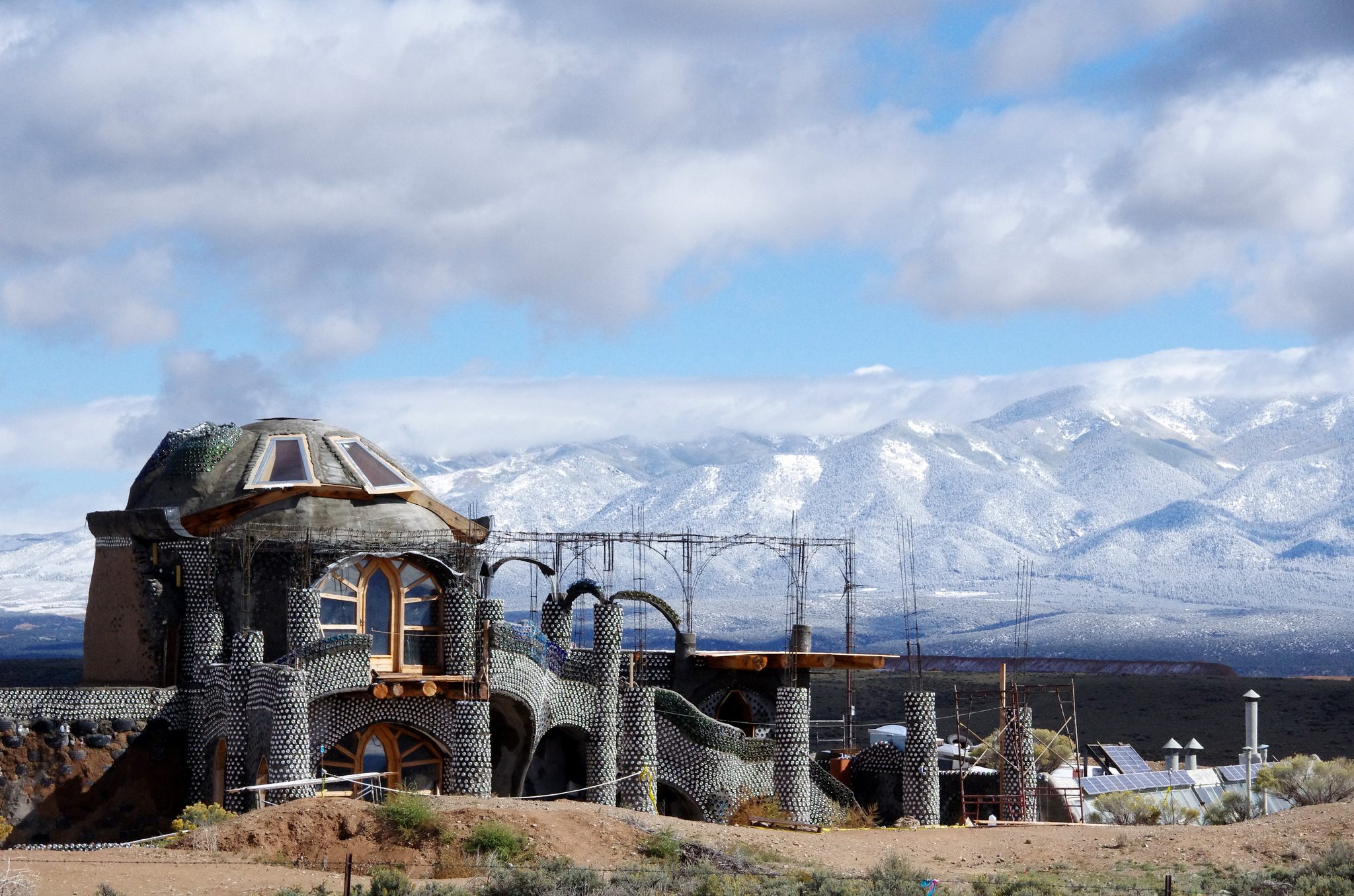
The EVE Project Earthship in Taos (photo by Sarah Richter / Flickr)
It’s perhaps not surprising that a structure called “Earthship” has been around since the ’70s—and that, like similarly vintaged trends of Birkenstocks and juicing, they never quite died. They only faded away.
Earthships are designed to be entirely off-the-grid and self-sustaining, constructed from reclaimed and recycled materials and making use of natural resources. The term originates with architect Mike Reynolds, a pioneer of ”radically sustainable living,” who coined it in 1971. He designed his “Earthship Biotecture” house out of recycled materials in 1972, and he has been refining the concept ever since.
They tend to be horeshoe-shaped to maximize natural light, using windows and skylights with integrated shades to improve cross-ventilation and help regulate heat, and are often built underground where the temperature has less fluctuation. Many include a principal glass wall facing the equator to optimize solar exposure, thick external walls made of rammed-earth tires to regulate temperature, and internal walls constructed from a honeycomb of recycled cans. They also include intricate systems to collect, harvest, and purify water, with greywater for flushing and blackwater for compost, as well as wind turbines, deep-cycle batteries, and a new invention called a Power Organizing Module to convert stored wind and solar energy for AC use.
Although Reynolds has faced some significant legal and professional challenges, his designs continue to be embraced, and there are now Earthships all over the world, from Europe to Africa. Here are several fascinating examples.
Greater World Earthship Community, New Mexico

One of the Earthship in the Greater World Community (photo by Biodiesel33 / Wikimedia)
A few miles west of Taos sits the 600-plus-acre Earthship Community, started by Mike Reynolds and Earthship Biotecture. There’s room in the community for 130 homes and 200 people, and each home sits on an acre or more of land.
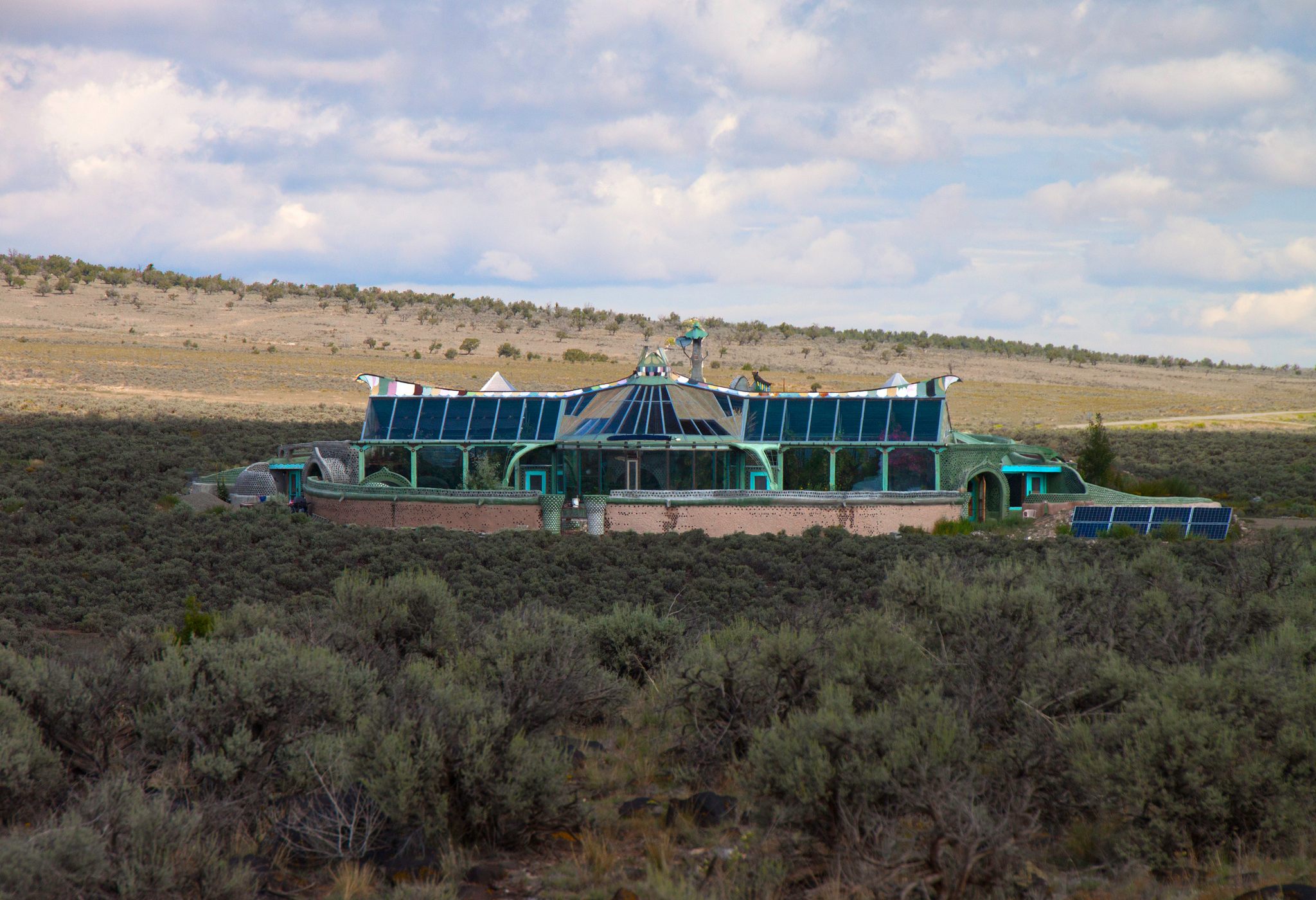
Phoenix: Another Greater World Earthship (photo by SMTB1963 / Flickr)
The community includes more than 300 acres of shared land, and is fully off the grid, using exclusively solar and wind power. Some of the homes, such as the Phoenix, can be rented out by the night. Greater World is very much a work in progress, with a projected 20-year plan to reach completion.
Brighton Earthship, U.K.
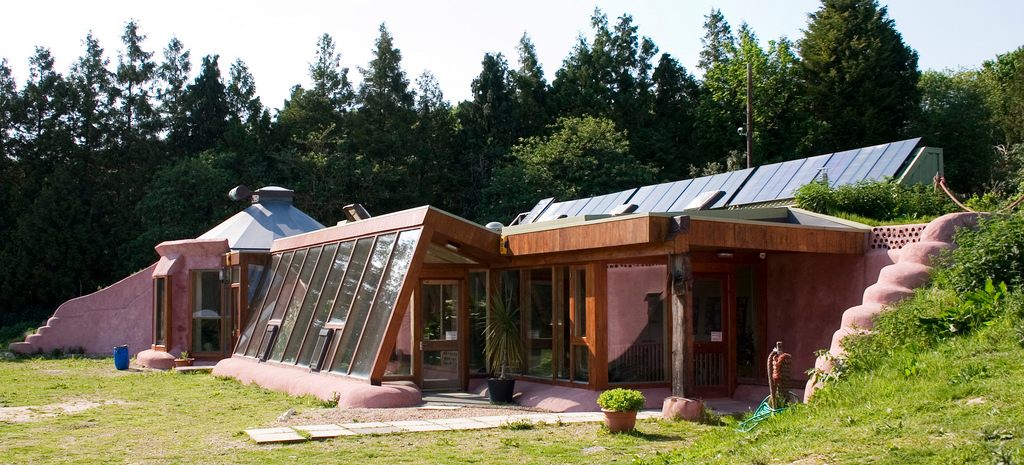
Brighton Earthship (photo by Dominic Alves / Flickr)
Built in 2007 by Earthship Biotecture and the Low Carbon Trust, the Brighton Earthship, one of only two in the U.K., serves as a community center for agricultural and horticultural nonprofit consortium Stanmer Organics. The building is constructed from used tires, sustainably sourced wood, and adobe. It was designed to maximize passive solar gain, and features composting toilets, solar-heated water, a wind turbine, photo-voltaics, and many other green features. Brighton Permaculture Trust uses the Earthship as a venue for many of its classes.
Kinney Earthship, Alberta, Canada
 Kinney Earthship (photo by Green Energy Futures / Flickr)
Kinney Earthship (photo by Green Energy Futures / Flickr)
The 1,800-square-foot Kinney Earthship is the home of Dawn and Glen Kinney. More than 12,000 cans and 800 tires were used in its construction, which took place over one summer. Mike Reynolds was an advisor and helper on the project, bringing a dozen workers and thirty volunteers from New Mexico to help complete it, along with several of the couple’s six adult children. The Kinney Earthship generates all its own electricity, grows much of the family’s food, and recycles all greywater.
Earthship Fife, Scotland
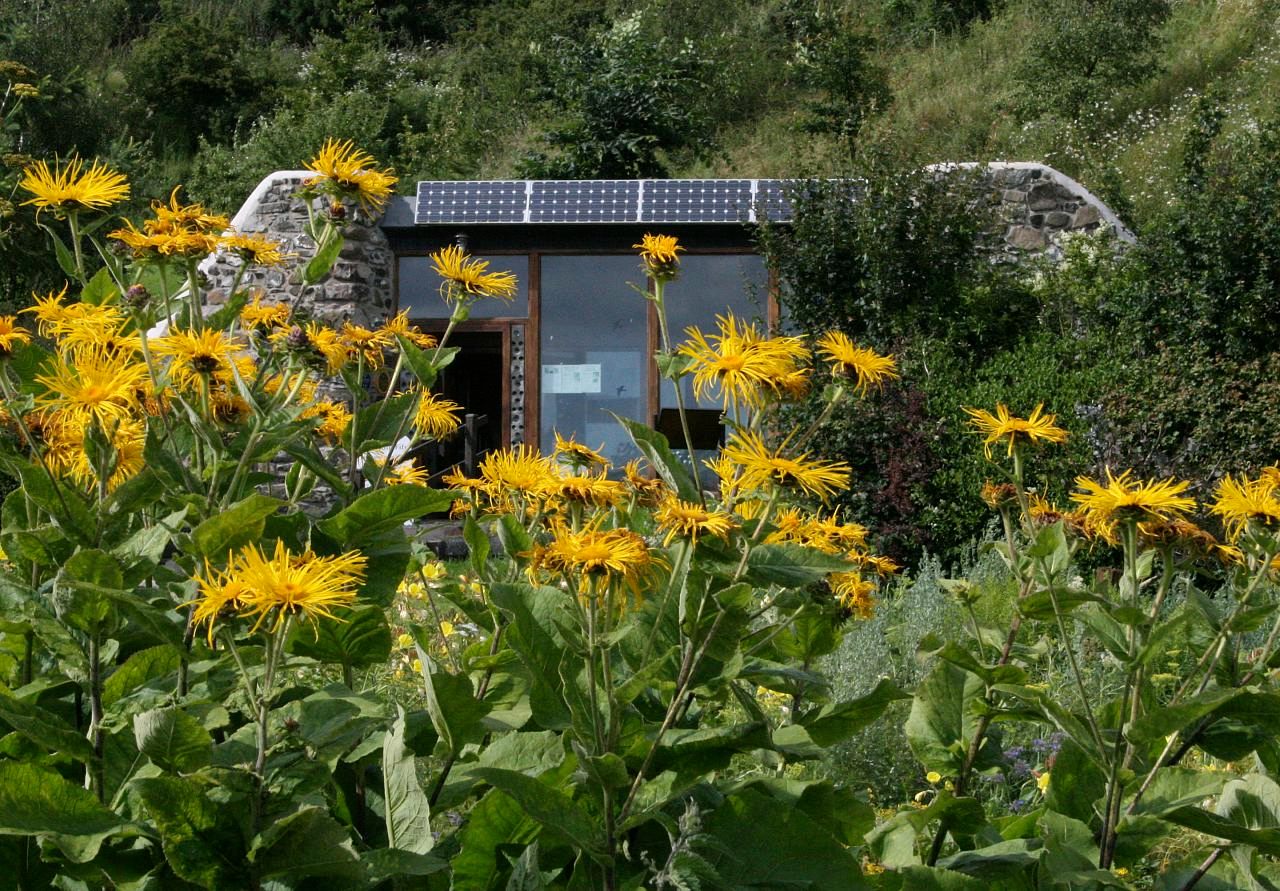
Earthship Fife Visitor Center (photo by Tom Parnell / Flickr)
Scotland’s first Earthship, built in 2004, is home to the nonprofit Sustainable Communities Initiative, which works with communities on social and environmental sustainability. SCI’s founder Paula Cowie wrote her dissertation on Earthships, then fundraised to hire Mike Reynolds and his crew to help her build it. Earthship Fife generates all its own electricity, has a rooftop rainwater-catching system, and treats all its sewage in contained planter beds. SCI also tried to spearhead the creation of a twelve-house Earthship community in Fife, but the proposal was rejected.
Casa Llanta, San Juan Del Sur, Nicaragua
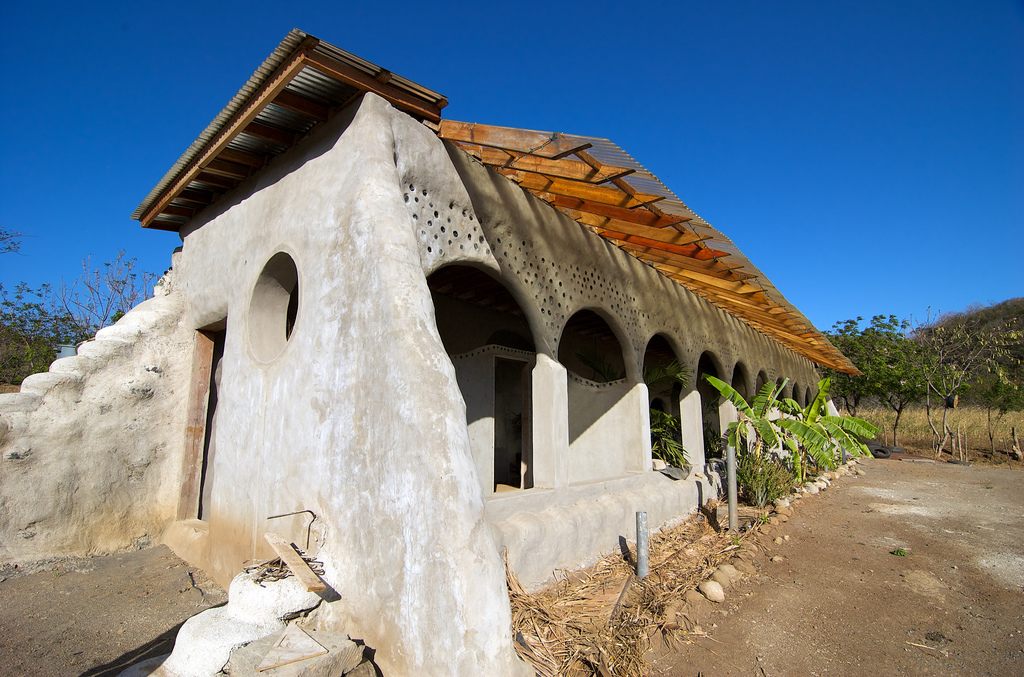
Earthship in El Carizal (photo by Devin Poolman / Flickr)
Casa Llanta, or “tire house,” is the first Earthship in Nicaragua, built in 2009 by a group of ex-pat Californians. Earthships make sense in a rural area like San Juan Del Sur, where there is limited access to water, energy is extremely expensive, and long blackouts are a regular occurrence. Casa Llanta is built into the earth, making it adaptable to the country’s varying temperatures, and an extensive rainwater-catchment system stores excess water from the rainy season for use when things are dry. The Earthship builders worked with Nicaraguans in the community, sharing energy- and water-saving techniques that can be implemented to help local residents become more self-sustaining.
Project Aardskip, Orania, South Africa
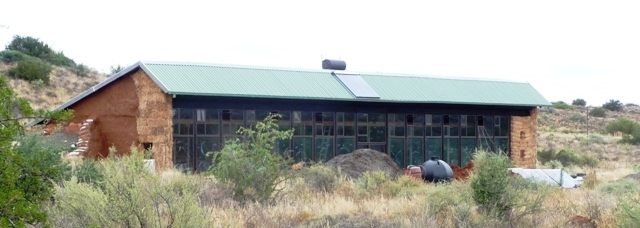
Project Aardskip (photo by Ludwig.everson / Wikimedia)
The small town of Orania is one of the most eco-focused in South Africa, making it a natural home for an Earthship. Project Aardskip was designed by Christiaan van Zyl, one of South Africa’s foremost sustainable architecture experts. Since the climate there is very hot, Aardskip is constructed from earthbags, insulated with wool, recycled polystyrene, and plastic soda bottles, and designed with overhung roofing, so as not to let in any sunlight between November and March. The building is still in development; when completed it will be the largest earthbag Earthship in the world. It will consist of a residence, a bed-and-breakfast, and an information and training center to teach other South Africans the principles of sustainable building design.




Follow us on Twitter to get the latest on the world's hidden wonders.
Like us on Facebook to get the latest on the world's hidden wonders.
Follow us on Twitter Like us on Facebook